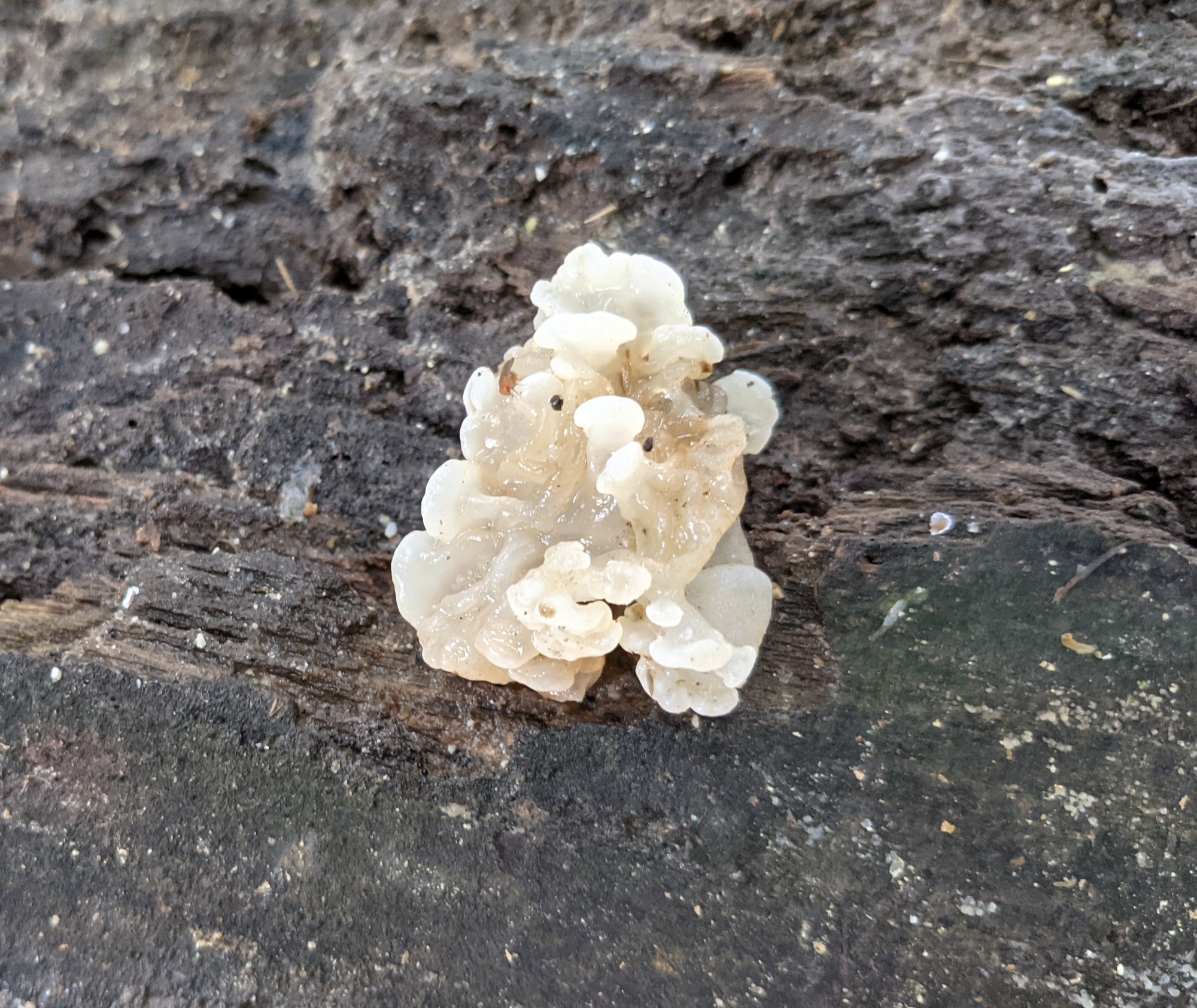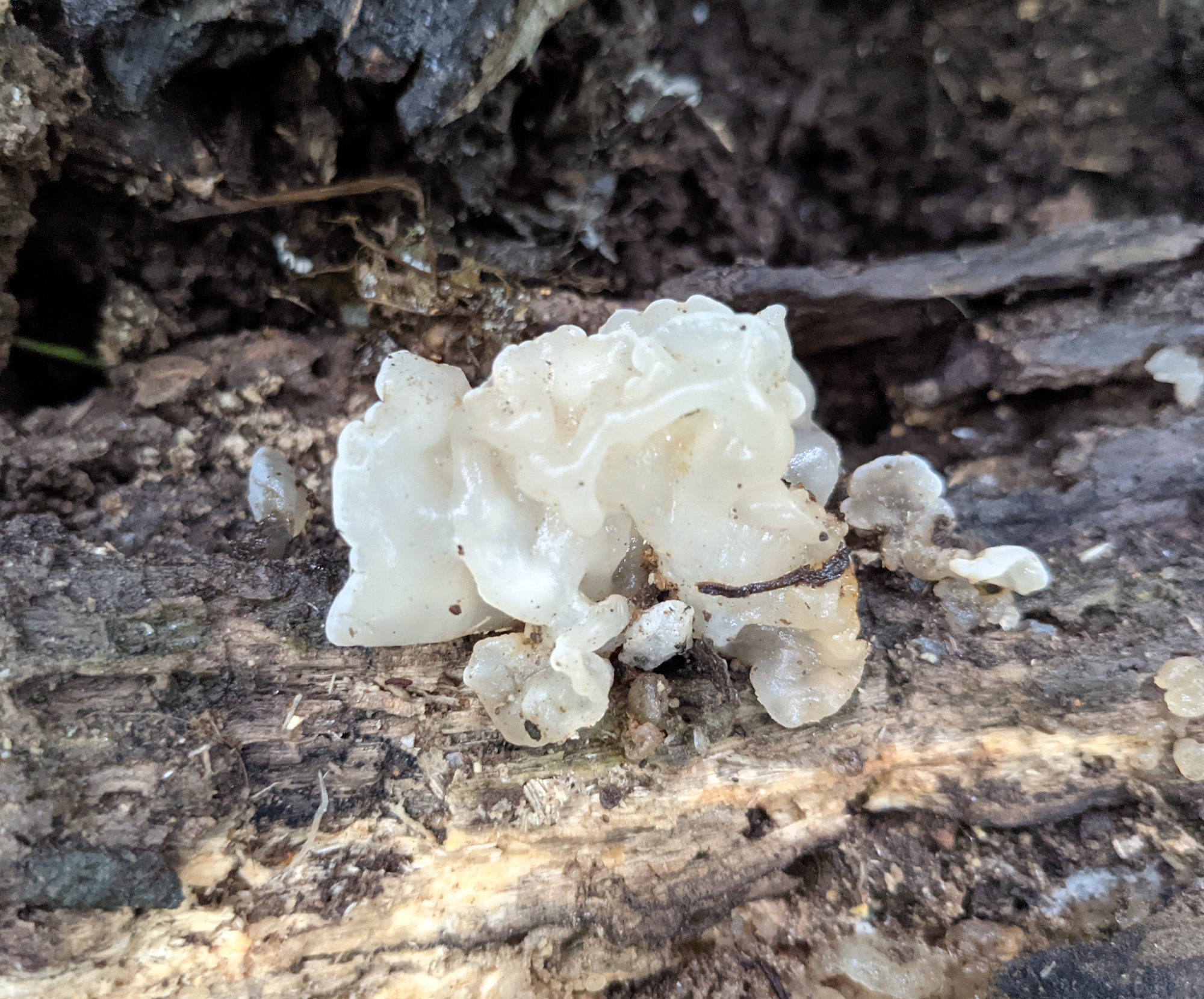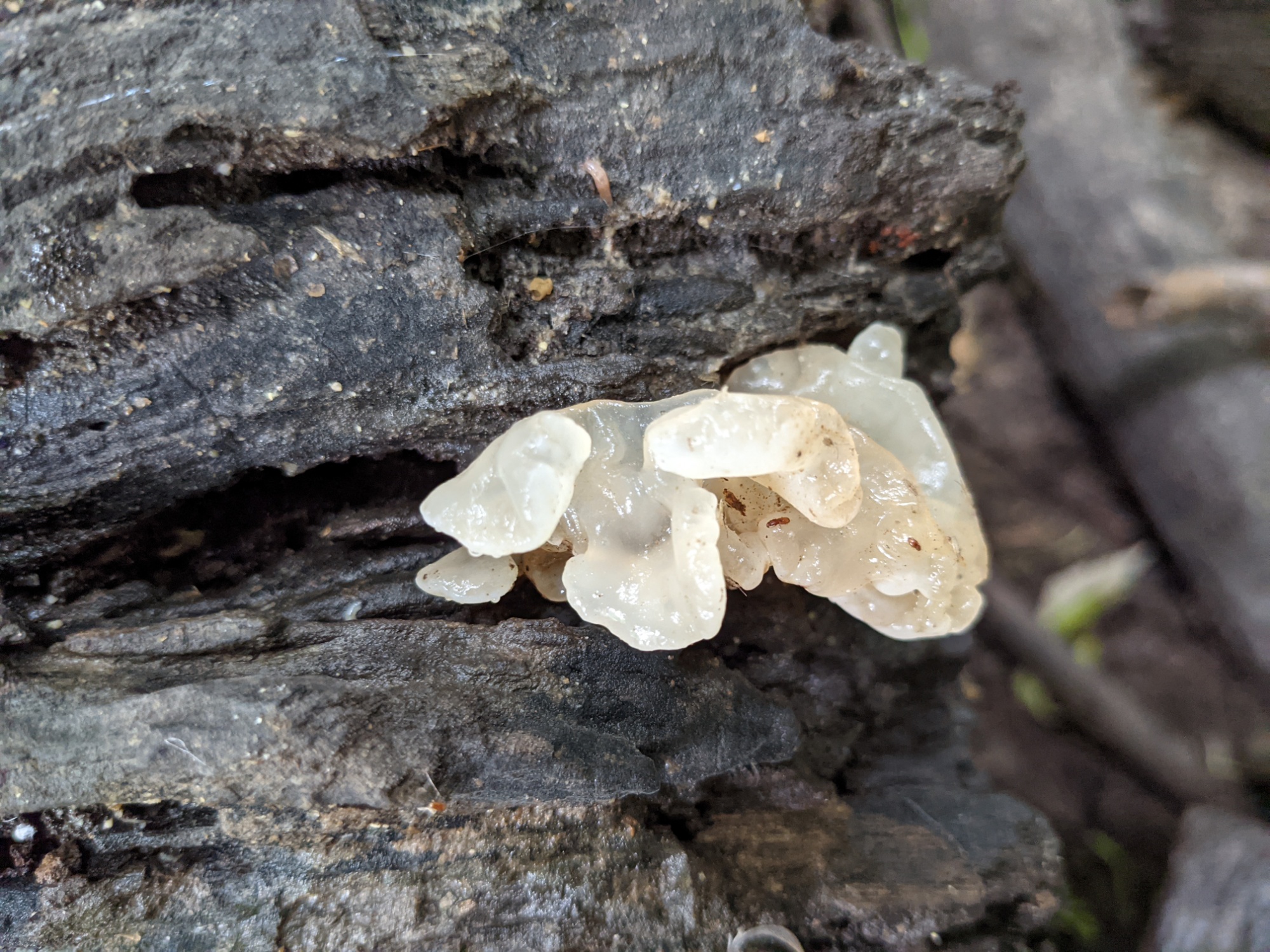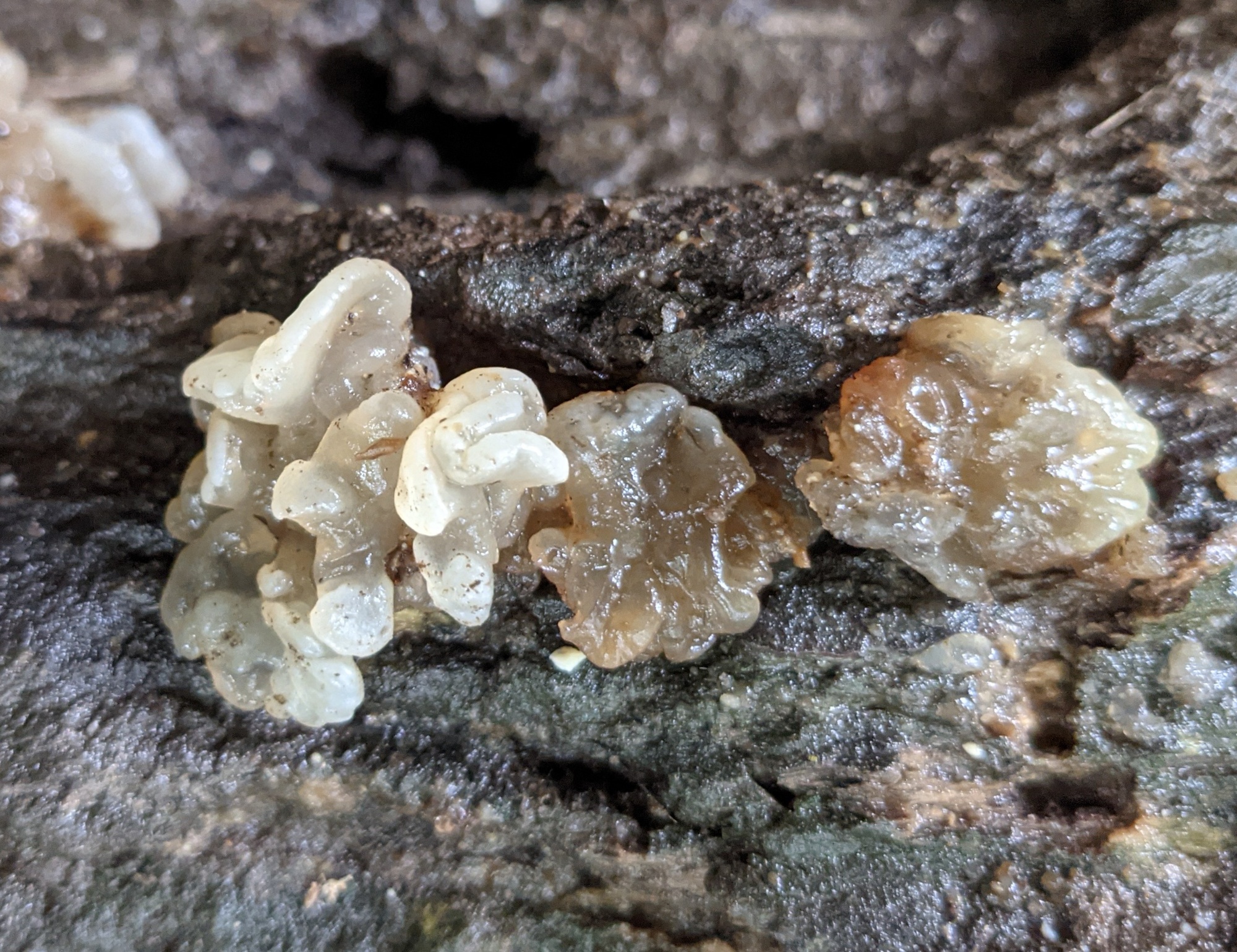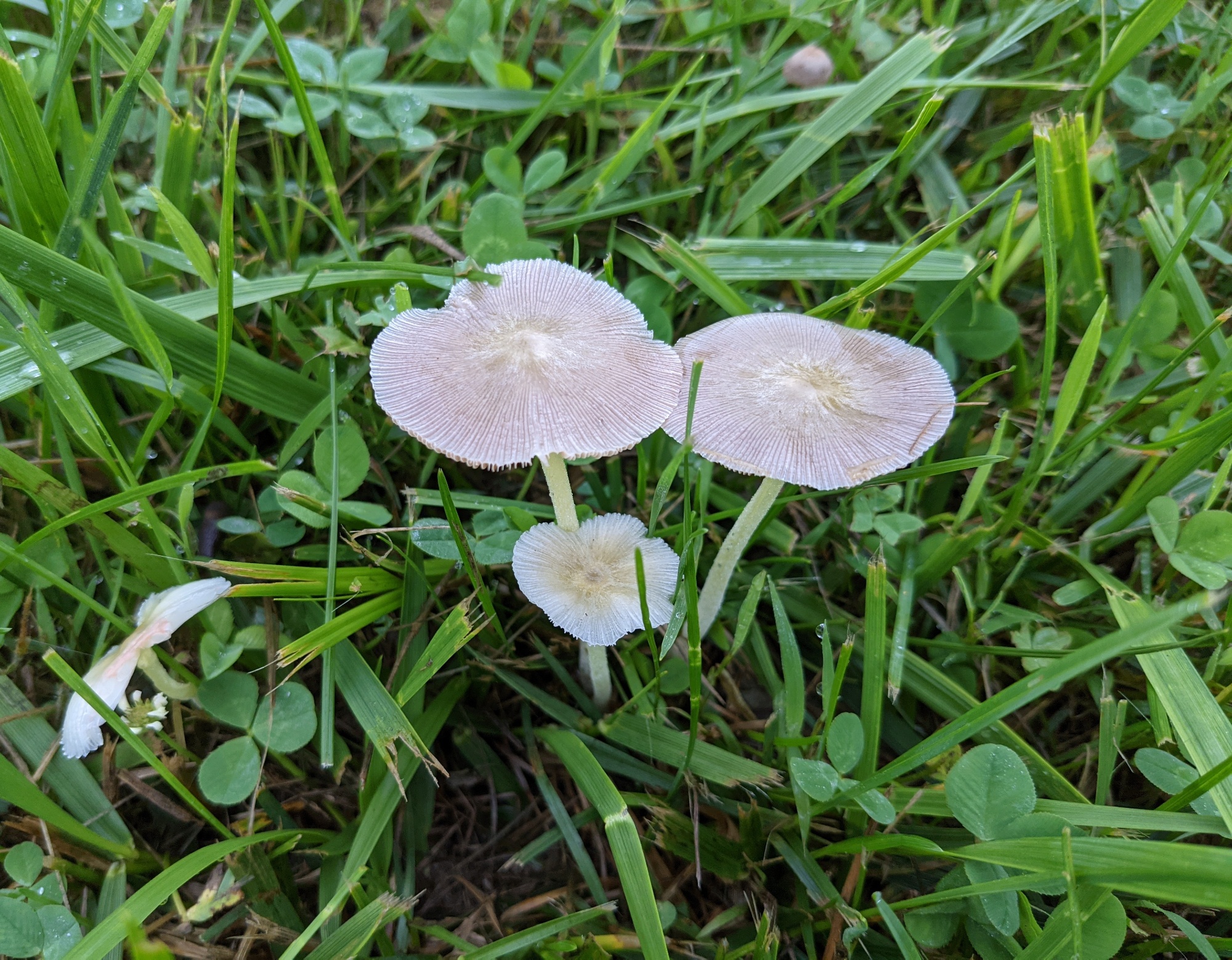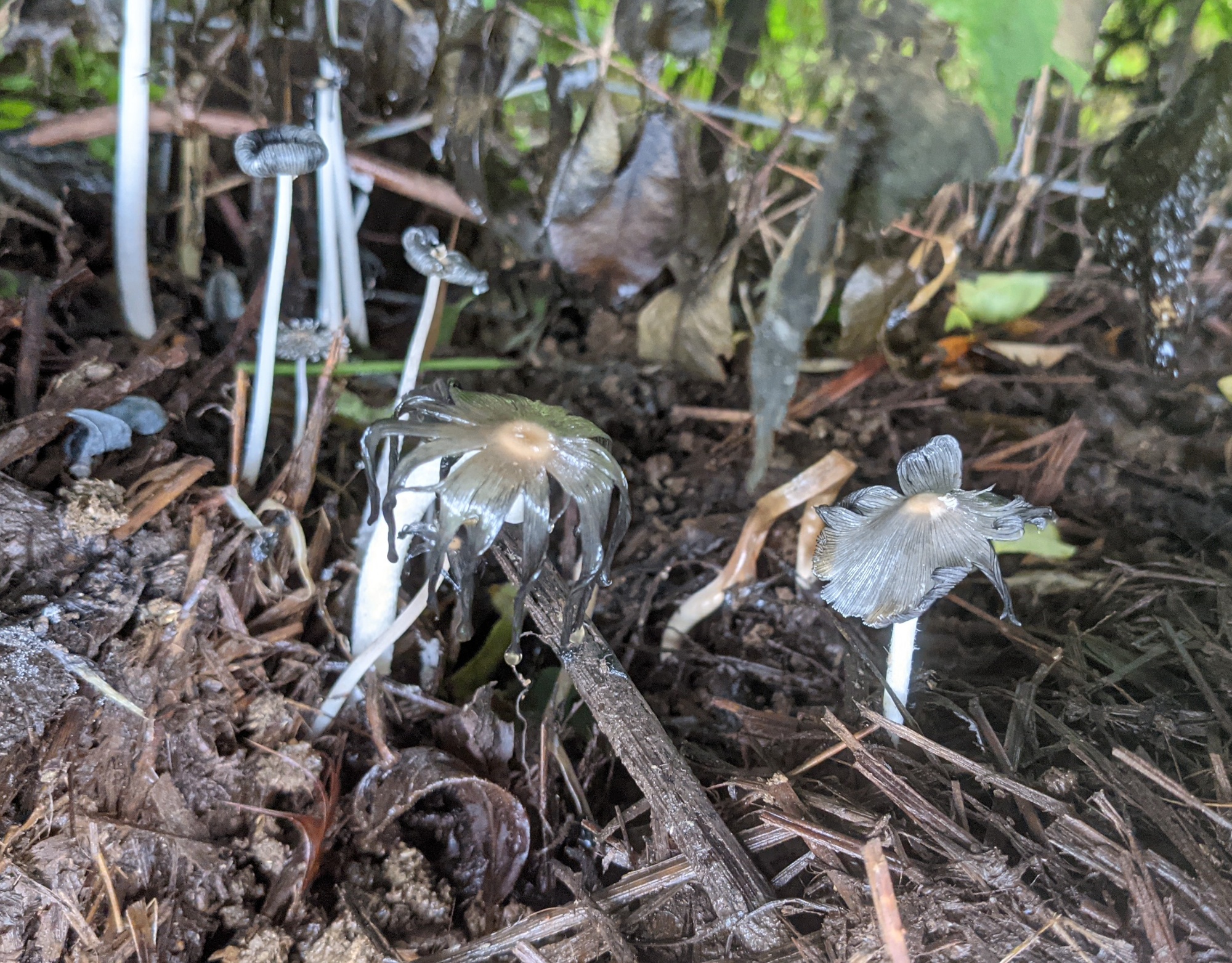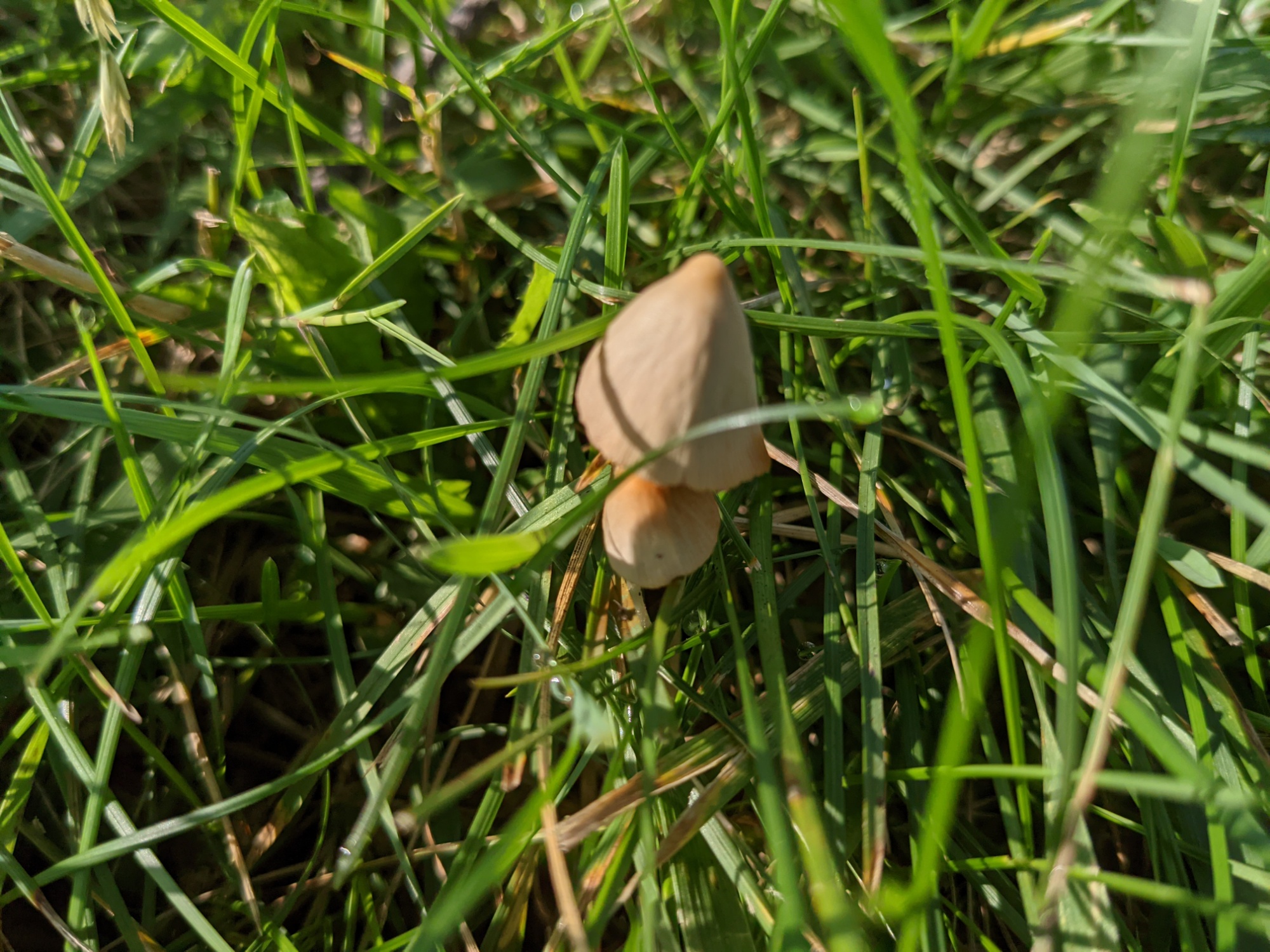
It’s been humid and wet here lately. That means unpleasant conditions for people, but apparently ideal conditions for fungi. Read on to see what’s been popping up around here!
Fungi are everywhere: hidden in the grass, on fallen logs, on fences, right out in the open. While all mushrooms are fungi, not all fungi are mushrooms; mushrooms are “fleshy fungi” or the fruiting bodies of fungi, and not all fungi produce fruiting bodies. Mushrooms belong to the major group of fungi called “macroscopic filamentous fungi”.

Did you know that fungi are arguably more similar to animals than plants? For example, fungi (unlike true plants) do not contain chlorophyll, the substance that allows plants to convert sunlight to energy, in a process called photosynthesis. Also, fungal cell walls are composed of chitin, a substance found in the shells of crustaceans like crabs; plant cell walls, on the other hand, are composed of cellulose.
Humongous Fungus: what we see above ground are mushrooms, but a hidden fungal mycelium may be much larger. In the forests of eastern Oregon, a honey mushroom mycelium is thought to have a footprint of 3 square miles…and is the largest single living organism on the planet.
Though I enjoy foraging, I don’t routinely forage for mushrooms. The simple reason is risk: mushrooms may have many toxic lookalikes and I don’t have sufficient expertise with most I happen upon to be able to differentiate between “ok to eat” and “poisonous”. Since I’m not planning to eat any of the mushrooms shown in this post, I’ll settle for drinking in (only metaphorically, of course) their sometimes-strange beauty.

